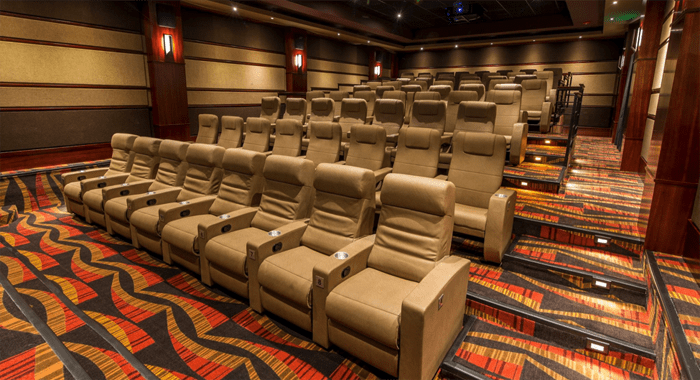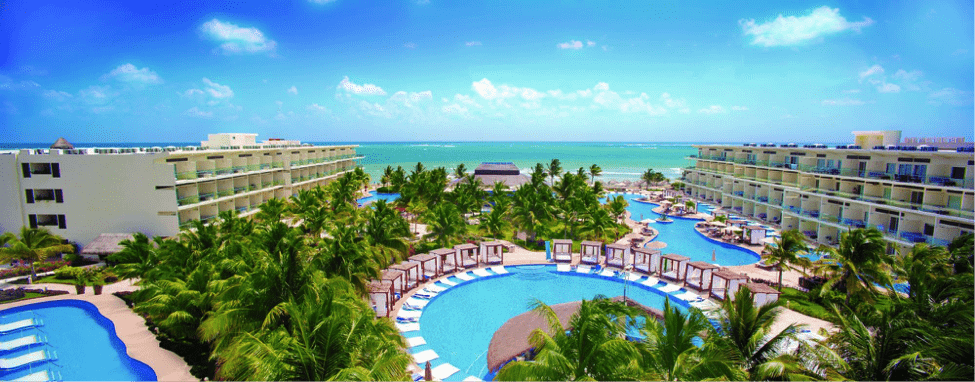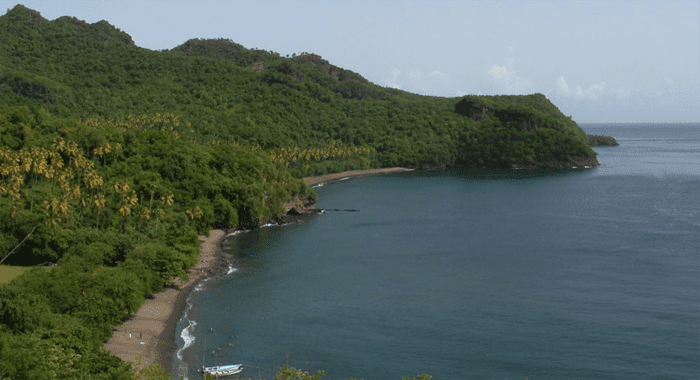The views expressed herein are those of the writer and do not represent the opinions or editorial position of iWitness News. Opinion pieces can be submitted to [email protected].
Invest SVG, a publically-owned company (formerly called DEVCO) reporting directly to the Office of the Prime Minister of St. Vincent and the Grenadines (SVG) just announced that “… government had already signed two Memoranda of Understanding (MoUs) that will see major projects, as it relates to hotel and tourism development, begin here soon” (The Vincentian newspaper, March 24, 2016, p. 6).”
“The focus is on two major projects: the development of 250 acres of land at Mt Wynne/Peter’s Hope for which a MoU was signed with Karisma Hotels and Resorts, that will see the construction of three five star, all inclusive gourmet resorts; and the development of a new city at Arnos Vale, once E.T. Joshua Airport has been decommissioned.”
Starting with the second MOU, Invest SVG’s top official, Executive Director Bernadette Ambrose-Brown, claimed that the “… Trinidadian franchise, MovieTowne, has already signed a MoU that will see the construction of an entertainment facility that includes a Cineplex, boutique hotel, shopping plaza and an amusement park.”
“It is anticipated that the shopping plaza will attract some international brands such as Burger King, Popeye’s [a fried chicken chain] and Haagen-Daz [a gourmet ice cream franchise].”
From my perspective, this is all wishful thinking.
But first, what is a MoU? For the purposes here, a memorandum of understanding is an agreement between two parties indicating an intended common line of action, in this case an intention to pursue (on the part of an investor) and endorse (on the part of a government) a particular business venture. It is often used in cases where one or both parties are not ready to make a legally-binding and enforceable commitment to proceed, in this case to develop a new city at Arnos Vale. In other words, a MoU is simply a more formal alternative to a casual gentlemen’s agreement based on a head nod or handshake.
Second, what is MovieTowne? It is a franchise wholly owned, developed, and operated by Trinidadian businessmen. The company has achieved an outstanding growth rate since it opened its doors in 2002 and is now the premier cinema and entertainment complex in Trinidad and Tobago (T/T) with three locations and 22 screens nationwide.

The flagship enterprise at MovieTowne Port-of-Spain is a one-stop entertainment destination for dining, liming, shopping, and live entertainment. The multi-faceted complex facility is home to a Mediterranean style courtyard mall, with over 60 retail shops and restaurants, fiesta plaza, outdoor dining and live entertainment area, banquet and conference centre, and amusement park featuring rides and outdoor activities for children and families.
A new franchise in San Fernando is nearing completion as is one in Guyana, “… the first gateway to taking the MovieTowne brand beyond our shores to the rest of the Caribbean region”.
There is no mention on the website of any MoU or even an interest in expanding to SVG.
Still, how realistic is it to expect a MovieTowne at Arnos Vale, SVG?
The demography and wealth of T/T and the prospects of expansion elsewhere in the region suggest the chances that MovieTowne would ever come to one of the poorer and less populated countries in the Caribbean are very slim.
T/T has a population of 1.2 million people and a per capita Gross Domestic Product (GDP) of US$32,800 (putting it in the category of “more economically developed countries”); SVG has less than one-tenth the population (110,000 people) and a per capita GDP of US$11,000, fully one-third the T/T level.
We simply do not have the population size or wealth level to support a MovieTowne franchise. (If this were not so, T/T would now have at least 10 of these franchises – instead of the three that are fully operational — serving different parts of that large country.) Nor is the Arnos Vale area an attractive venue for such an enterprise even if it were potentially viable.
A tourist hotel at Arnos Vale would attract few international holiday visitors, a pricey though elegant Cineplex would draw few customers while possibly bankrupting our the sole existing Kingstown movie house, and the products available at an upscale shopping plaza would be beyond the reach of most Vincentians.
If the struggling shops at our current cruise ship terminal in Kingstown and the two habitually vacant elite enclosed shopping malls at Rodney Bay in St. Lucia are examples, a MovieTown at Arnos Vale would quickly resemble a ghost town. Still, with so little to do in SVG, an amusement park sounds like a good idea, at least if there is sufficient patronage to make it economically feasible.
But all this is idle conjecture because if MovieTowne were to expand beyond Guyana (the birthplace of three of its owners and directors which may account for investing in a dirt poor albeit rapidly growing country) to other Caribbean countries, chances of its success would be much higher in richer and more populous destinations like Barbados or The Bahamas, nations that already attract hordes of tourists and that would be more than willing to offer the same tax and other concessions that we would be able to put on the table.
As for the prospects of the implementation of the terms of the second MoU for developing the Mt. Wynne/Peter’s Hope area with “three five-star, all inclusive gourmet resorts,” presumably oriented to the upscale international tourist market, I offer all the hospitality limitations described in 25 essays on the development of SVG mainland tourism.
Still, it is useful to ask whether Karisma Hotels and Resorts, a fairly new hotel chain founded in 2000 as a hotel management and marketing company based in the Dominican Republic, is likely to act on its MoU.
In recent years, Karisma has branched out into building its own properties under different brand names. Late last year, the company announced plans:
“…to invest more than US$900 million in projects that could include nine hotels in the country [of Jamaica]…. The company isn’t new to Jamaica, having opened its first hotel, Azul Sensatori Jamaica in Negril last year, with construction already underway for a neighboring hotel, Azul Seven, a 149-rooom, $US 45 million project in Jamaica.
The company has now acquired 228 acres on the north coast of St Ann, with plans for nine hotels comprising 4,000 new rooms over the next decade”.
But apart from the Dominican Republic and Jamaica, Karisma has no other properties in the Caribbean. So how likely is it that this company will ever build “three five star, all inclusive gourmet resorts” at Mt. Wynne/Peter’s Hope even if it were granted the same 20-year tax-free exemption given the troubled Buccament Bay Hotel and Resort, a project Karisma executives must be closely watching?

The most telling evidence that the MoU will bear no fruit is that Karisma has made no announcement of having the slightest interest in building even a single resort in SVG.
The same holds true for every hotel chain, nameless “group of Canadian investors,” and airline said to be “interested” in serving our hospitality sector. Compare this to the way we are now being bombarded by enthusiastic announcements from hotel chains and airline companies eager to cash in on the predicted explosion in the Cuban hospitality sector, even as the government of Cuba has kept fairly tight-lipped about these developments.
The poor people at Invest SVG, as highly paid and underworked as they may be, have a heavy burden trying to peddle our sow’s ear of a mainland hospitality industry as if it were a silk purse. We have been desperately trying to off-load Mt. Wynne/Peter’s Hope for at least 35 years to no avail. Given all our mainland tourism limitations, especially the absence of white sand beaches, we would still be doing so 35 years from now. (Conversely, if the Mt. Wynne/Peter’s Hope beaches consisted of silky-soft white sand, hotels and resorts would have been built there decades ago, despite the absence of an international airport).
Finally, if two tentative MoUs and an unfinished resort at Buccament Bay is all we have to show for our efforts to build a thriving mainland tourist industry nearly 11 years after Dr. Ralph Gonsalves’ “famous speech” on August 8, 2005 announcing the construction of Argyle International Airport (AIA), we are surely on the road to perdition.
Equally important, even if both MoUs are followed up on, the net result would still be devastating. According to Glen Beache, CEO of the SVG Tourism Authority:
“Limitations on room stock will keep us from overgrowing, and those limitations will not disappear. This is a multi-island destination and they are small islands – there are simply not large plots of coastal land available for mega-development. On the largest island, St. Vincent, we have 463 acres put aside for hotel development at Mt. Wynne, on the Leeward coast near Layou – after that there’s no other land available”.
Applied to Karisma, this means that if the chain actually built “three five star, all inclusive gourmet resorts” totaling 600 rooms at Mt. Wynne/Peter’s Hope, this would come nowhere close to justifying the costs of constructing and operating AIA, something an airport economic feasibility study would surely have shown.
***
This is the 26th in a series of essays on the folly of the proposed Argyle International Airport.
My other AIA pieces may be found at:
- Get ready for a November election!
- Lessons for Argyle Airport from Canada’s Montreal–Mirabel Int’l
- Lessons for Argyle Int’l Airport from the cruise industry
- Lessons from Target Canada for Argyle Int’l Airport
- Lessons from Trinidad & Tobago for Argyle Int’l Airport
- The Dark Side of Tourism: Lessons for Argyle Airport
- Why Argyle Won’t Fly: Lessons from Dominica
- Ken Boyea and the Phantom City at Arnos Vale
- Airport Envy Vincy-Style
- Fully realising our country’s tourism potential
- Airport without a cause
- The unnatural place for an international airport
- The Potemkin Folly at Argyle
- False patriotism and deceitful promises at Argyle
- Airport politics and betrayal Vincy-Style
- Phony airport completion election promises, Vincy-style
- Is Argyle Airport really a ‘huge game-changer for us?’
- Has the cat got your tongue, Prime Minister?
- More proof that Argyle won’t fly
- Our very own Vincentian cargo cult at Argyle
- The missing Argyle Airport feasibility studies
- The world’s four most amazing abandoned airports
- Farming, fishing, and foolish talk about Argyle International Airport
- Argyle Airport amateur hour
- St. Vincent’s place in the world of travel
C. ben-David
The opinions presented in this content belong to the author and may not necessarily reflect the perspectives or editorial stance of iWitness News. Opinion pieces can be submitted to [email protected].







While I think that mainland SVG can have success in tourism it won’t be the sand and sea tourism that the authorities keep trying to peddle. Who takes Invest SVG seriously anyway? And what have they ever done to justify their existence?
Heaven knows that I have no intention of being cynical today. But, if it is true that SVG, under the auspices of Invest SVG, lost out on a deal to take plantains from tree to chips; if it is true that SVG lost out to Trinidad on such a deal even at a time when SVG was feeding Trinidad with plantains, how likely is it that Invest SVG will pull these things off in the present circumstances? Now, tell me.
Anyhow, as I am here, I take this opportunity to tell folks that I own 2 acres of good swampland west of the Brooklyn Bridge. The plot is going cheap and I am inviting only serious expressions of interest.
St. Lucia is a volcanic island much like St. Vincent. The “silky-soft white sands” of St. Lucia you keep referencing were imported. The well famed, much discussed largest beach in St. Lucia sand was import. Any reason why the hoteliers of SVG can’t do the same?
So with an International Airport at hand and silky-soft white sand beaches can be bought along with the Grenadines in our hip pockets, what will slow tourism now??
Not true. Only one beach, Jalousie, had its black sand covered with imported white sand brought in by the Hilton hotel on the beach. There are other black sand beaches on the south coast but most St. Lucian beaches are of the white natural coral sand variety preferred by tourists and locals alike even though, as you rightly claim, the island is of ancient volcanic origin.
Even at Mt. Wynne, a close inspection shows specks of white sand. Who knows, perhaps thousands of years from now the breakdown of coral from inshore and outer reefs may transform the whole area to white sand.
We have mixed white and black sand beaches at Villa/Indian Bay testimony to the way ancient volcanic island beaches are transformed over time.
In the meantime, nature has dealt us the cards we have. Let’s learn to live with it by accepting that we are not a tourist island and stop fooling people with this airport nonsense.
It is important to backstop and confront a feeble fact-shaper lest he stray too far from the truth and manages to convince even himself.
I’m a repeat tourist to st Vincent. I like the fact there are no tourists here. Every article I’ve read on tourism here is talking about high end rich tourist facilities and services. I come here to appreciate nature. I hike forestry trails that aren’t on any map. I snorkel. This year I tried diving. I’m definitely going to become a certified diver, probably here, next year. With your unspoiled forests, mountains, and coastline, why aren’t you going after the Eco tourist? Leeward has your best hiking and snorkelling. The Cumberland Trail, the leeward ascent of Soufriere, the Trinity Falls trail, are neglected, falling apart. Leeward has three major harbours all neglected. Vermont could easily have 3-4 Nature trails. The one trail that does exist hasn’t changed much in the last 6 years. These upgrades wouldn’t even cost that much, and they would draw a lot of tourists like me. More importantly tourists like me are much less of an impact on your culture and your environment. Finding a good guide to the Botannical Gardens is like winning the lottery. Every plant was brought here for a reason by the British, now mostly forgotten. White sand beaches are irrelevant to me. I didn’t travel thousands of miles to sit on a beach reading a book, and be pestered by people trying to sell me something. I’m here to enjoy your people, your culture, the incredible nature you have here. Rich tourists will just isolate, reduce you to servants. Only a few people will actually benefit from some rich resort. You have the virgin forest, you have the rich coastal sea. Use them to your advantage.
Your excellent and accurate comments about the willful neglect of our eco-tourist sites clearly indicate that eco-tourism as a major tourist thrust in a small country like ours is self-contradictory. This is not the Western United States where millions of eco-tourists can be accommodated in dozens of national parks making up millions of acres. Even with this vastness, there is much concern among environmentalists about permanent ecological destruction if these numbers continue or increase. Yellowstone National Park, a global environmental treasure if there ever was one, is very much in danger.
Compare this to little St. Vincent island where even 100,000 more annual eco-tourists — a figure that would hardly make the building of our new airport worthwhile — would cause enormous permanent physical destruction, especially to our depleted forests. Look at the figures: Yellowstone contains 2,219,789 acres; St. Vincent Island’s land mass (including urban and semi-urban areas) is 85,120 acres. Yellowstone National Park is 26 times larger than the whole island of St. Vincent. If we looked just at the pristine forest areas, this number would nearly triple!
And a 100,000 more eco-tourists coming to St. Vincent (which is perhaps ten times more environmentalists than visit now) every year would be equivalent to doubling the 3.8 million annual number of visitors to Yellowstone National Park, something the US Park Service and the general public would not tolerate.
Also, even without any damage, people like you would simply stop coming here if there were so many other people crawling all over the place, as you comments imply.
This is the contradiction in eco-tourism: the more pretend eco-tourists (the majority of Yellowstone visitors), the fewer real eco-tourists like yourself, but the more environmental damage.
None of this means that the government should not be managing our eco-tourist (and other visitor) sites better. But with so few people visiting and with so many other areas needing funding, I guess the powers that be see it as a waste of money.